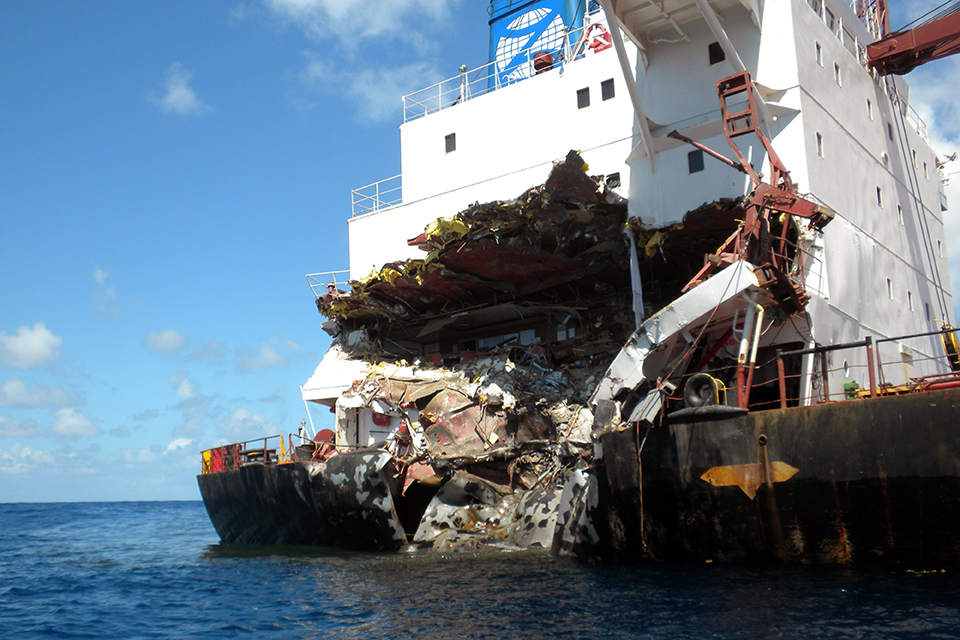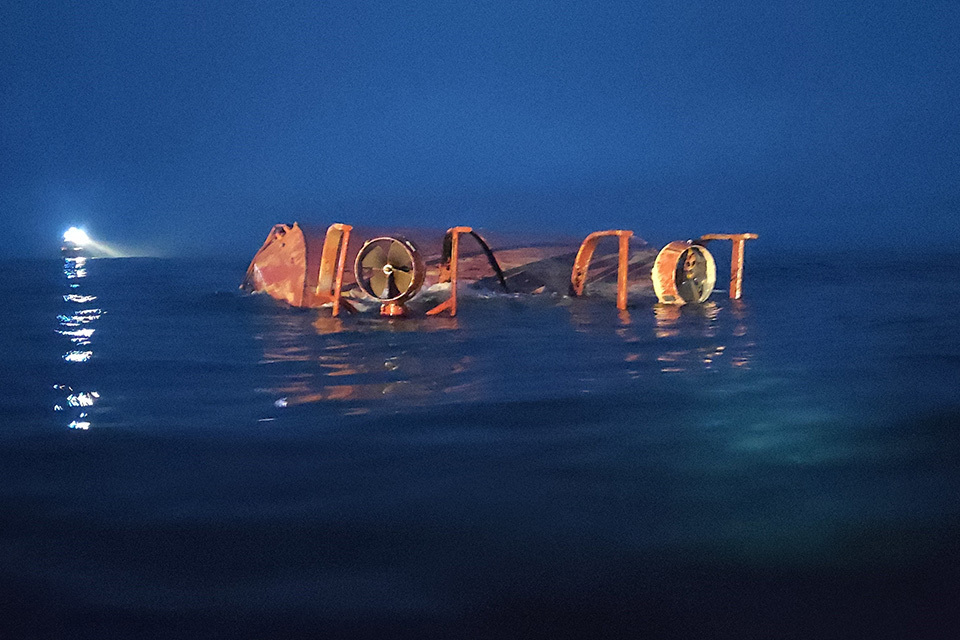Circumvention of navigational safeguards
Published 30 November 2023
1. Summary
This safety flyer to the shipping industry highlights the continuing trends found in accidents investigated by the MAIB, where the officer of the watch (OOW) had been the sole watchkeeper during hours of darkness or in restricted visibility and/or the Bridge Navigational Watch Alarm System (BNWAS) had been disabled.



2. Narrative
In June 2009, the BNWAS was first mandated with the aim of monitoring bridge activity and detecting any operator disability that could lead to marine accidents. The MAIB has since completed 81 investigations of collisions, groundings and contacts, of which 20 involved sole watchkeepers at night or in restricted visibility and/or the BNWAS being disabled. These cases shared similar contributory factors, including:
Lookout
-
prioritisation of day-to-day maintenance over provision of a dedicated lookout during hours of darkness
-
minimum, or near minimum, crewing levels that did not cater for the full range of shipboard activities
-
underappreciation and misunderstanding of the benefits of a lookout integrated into the bridge team; and
-
falsification of documentation, such as the deck logbook, records of hours of rest and watchkeeping schedules, to avoid company and port state sanctions
BNWAS
-
perception of the system as an unnecessary nuisance instead of an important safety barrier
-
continued use of retrofitted, standalone systems that required an operator action to reset them rather than an integrated reset function triggered by bridge equipment or movement sensors
-
keeping the system key or code on the bridge, providing an opportunity for disablement; and
-
status of the BNWAS not recorded on the voyage data recorder (VDR), removing the opportunity to review BNWAS use during inspection and audit
Other factors such as alcohol consumption, fatigue and use of ECDIS[footnote 1] were also identified; however, it is a cause for concern that these safety barriers were often circumvented despite the international requirements to post a dedicated lookout during the hours of darkness and to operate a BNWAS.
Ship owners and managers are urged to carry out detailed and accurate reviews of the use of a lookout and BNWAS on board their vessels and make provisions to support crew to comply with the mandatory requirements contained in the regulations.
3. Further information
This flyer was issued as an action taken by MAIB in BBC Marmara, investigation report 8/2023.
Photographs used above were, in order of appearance, originally published in:
Extract from The United Kingdom Merchant Shipping (Accident Reporting and Investigation) Regulations 2012 – Regulation 5:
The sole objective of the investigation of an accident under the Merchant Shipping (Accident Reporting and Investigation) Regulations 2012 shall be the prevention of future accidents through the ascertainment of its causes and circumstances. It shall not be the purpose of an such investigation to determine liability nor, except so far as is necessary to achieve its objective, to apportion blame.
Note:
This safety flyer is not written with litigation in mind and, pursuant to Regulation 14(14) of the Merchant Shipping (Accident Reporting and Investigation) Regulations 2012, shall be inadmissible in any judicial proceedings whose purpose, or one of whose purposes is to attribute or apportion liability or blame.
Marine Accident Investigation Branch
First Floor, Spring Place
105 Commercial Road
Southampton
SO15 1GH
Email iso@maib.gov.uk
Enquiries during office hours +44 (0)23 8039 5500
-
Electronic Chart Display and Information System. In September 2021, the MAIB and Danish Maritime Accident Investigation Board published Application and usability of ECIDS, a collaborative study on ECDIS use from the perspective of practitioners: https://www.gov.uk/government/publications/application-and-usability-of-ecdis-safety-study ↩

